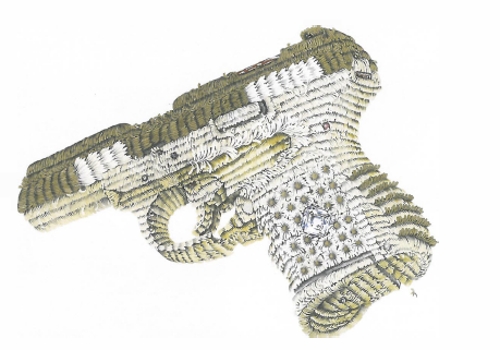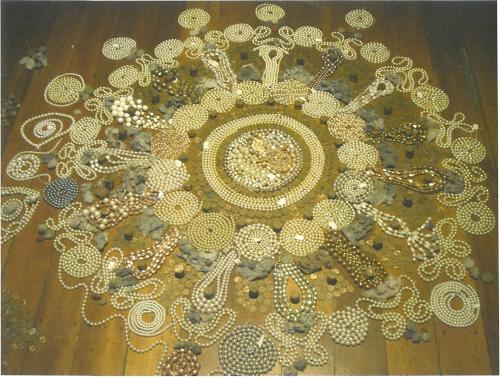
When Ryder, the dishevelled hero of Ishiguro's novel The Unconsoled wanders around an unrecognisable city with his synapses firing, there's a sense of visual receptivity about his movements possibly akin to the frisson that occurs when a city gives itself over to art. The third FotoFreo Festival took place this autumn, with works hung in unexpected venues scattered across the city as well as a plethora of gallery spaces featuring exhibitions. The expectation that the viewer will traverse the streets to find the works provides a fruitful structural ploy and as in the last edition there was a sense of elusiveness about a 'correct' path by which to take in the widest range of genres across the 'lens arts'.
In the group show Transformations: New Chinese Photography held at the Fremantle Arts Centre, a number of artists, in astoundingly large-scaled works, used architectural landscapes as an indicator of social environment. Zeng Li's studies of 1960s worker units stand as tired reminders of socialist planning, and while shown without people, grimy exteriors poignantly allude to the lived histories within the walls.
In gleaming contrast Miao Xiao Chun's towering mural-sized Celebration showed the unveiling of a new building in downtown Beijing against a utopic powder-blue sky. In a manner reminiscent of Flemish 16th century painting, the viewer is given a bird's eye view of the minutiae of the event: an orchestra and fan dancers perform while construction workers peer from scaffolds. It's brighter than bright, but ironically buoyant. While presented as a documentation of a social movement, recalling work by Garry Winogrand, here the milling crowds aren't galvanised by politics, but by aspiration. It's possibly from such a building that Shi Guo Rui made Pinhole Shanghai, which hung directly opposite Celebration, and was created by converting an office room into a camera obscura. Shi's apocalyptic vision of the city with all detail negated, exists as hyperreal and silent – a blank template for a place immersed in change.
Photographers working with portraiture were threaded throughout the exhibitions. A selection of Douglas Kirkland's iconic images of Hollywood stars was at the WA Maritime Museum, and a survey of British artists exploring collaboration in portraits and curated by Susan Bright was at the Fremantle Arts Centre. Works ranged from Paul Jeff's live-art (video documentations of a sitting process) and the video and photographic works exploring a partnership to the blurring of subject and photographer, between the artist Anna Fox and performer Linda Lunus.
Also exploring the relational dynamics of portraiture was WA photographer Anthony Luvera, whose documentary series hung in the leafy courtyard of Notre Dame University. Based in London, Luvera's practice has seen him work with homeless people in a project of assisted self-portraits, which were last exhibited in the London Underground. Through teaching the participants photography the co-produced works bring an interesting level of inquiry to the images: what is the significance of locations chosen by subjects, and why that chosen deportment? Amid grey-skied poverty, subjects offer themselves unflinchingly, actively engaged in the process of self-depiction. While engaging with the traditions of social documentary Luvera's methodology offers an interesting dimension – with such an overt open contract, the subjective nature of documentation is transparent, and the works succeed powerfully because of this.
Other stirring spatial contexts included the installation effect of France's Antoine d'Agata's 250 photographs covering the walls of a loft-like room in the Moores Building, providing an intimate viewing space for the auto-confessional sexual documentations, and the joyful aquatic placement of David Doubilet's underwater work on the walls of the WA Maritime Museum, overlooking the Indian Ocean.
Such chunky inventive programming, a strong complementary events list, and the city's increasingly familiar role as biennial host to international photographic practice again establishes the Festival's significance. François Hébel, director of Arles Rencontres de la Photographie concluded at the Conference that it's expected today for countries to devote a month to photography, but he said that it's when 'the place responds inventively that it is exciting.'












